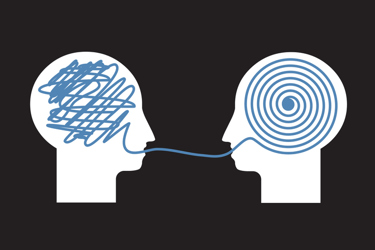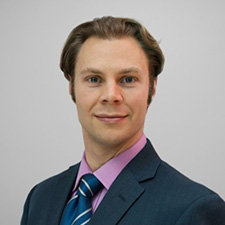The Right Words For Optimal Outsourcing

By Louis Garguilo, Chief Editor, Outsourced Pharma

Erich Bozenhardt, Lead Process Engineer – Regenerative Medicine, United Therapeutics Corporation (UTHR), is a chemical engineer, and has years of experience developing advanced therapies and drugs.
Before UTHR, and while at IPS-Integrated Project Services, LLC, he also penned a number of articles for our publications.
Here, I think, is a perfect source for the discussion we started with this editorial, “Do You Speak ATMP-CGT-RMAT? Better Watch Your Language.”
Particularly when speaking to your CDMOs.
Because one thing we’ve harped on for years:
Clear communication with CDMOs leads to optimal outsourcing outcomes.
No Casual Conversation?
Bozenhardt has experience in the biotechnology and aseptic processing business. He’s led biological manufacturing projects, including cell therapies, mammalian cell culture, and novel delivery systems.
He says, “When considering language use in the realm of CDMOs, ensuring we are using the same terminology is not trivial.”
“Picking the right terms can put you in the right slot for all expected CMC activities.”
How you explain your project (and organization, goals, etc.) leads to “certain expectations about what the manufacturing process is, needs to be, and what it involves.”
“You want those expectations to match up from the start,” he says.
“The CDMO needs to envision not only the actual manufacture process, but also any additional controls they need to have in place.
“Will there be a need for specific equipment, and additional testing?
“A specific cellular therapy or stem therapy may sway you one way or another in terms of what you and your CDMO believe you need to support those programs.”
Unfortunately, early miscommunications at CDMOs are not uncommon.
But they are timewasters.
And it can start with unclear terminology in RFPs.

“A CDMO basically begins with, ‘You have a cell therapy? That's great. We can grow cells.’
“But in fact what you really need to be focused on is handling a certain viral vector. Now you start to hear, ‘We're actually not set up to do that specifically. We didn't think you were talking about gene therapy.’”
If you are dealing with a bigger CDMO, at the least you then get switched to – and start over with – a different facility and business unit.
At the worst, you’ll need to move on altogether.
“But even once onboard your CDMO of choice,” adds Bozenhardt, “that partner [at your disciplined direction] must acquire the language precision needed in talking to regulators, and in helping prepare documents for filings.
“The last thing you want is a bump in the regulatory road caused only be a miscommunication of intention.
“Casual conversation with your CDMO about a project they understand and are working on already, that’s fine on one level.
“But better to stay precise – at least with their regulatory and quality professionals.”
When the FDA or EMA, or any other global body, comes to inspect, “the wrong terms around a cell or gene therapy could demonstrate a lack of understanding of process, and potentially sidetrack a visit or audit – or even a new-drug approval.”
That’s Where We Started
And that’s where we hopped on this linguistic consideration – differing terms used in different countries, such as ATMP and RMAT, have essentially but not quite the same meanings.
“I do think the EMA and FDA are trying to collaborate more on terminology, and are getting closer,” says Bozenhardt.
He also points to industry organizations helping out.
For example, he’s been involved in industry feedback to The Pharmaceutical Inspection Co-operation Scheme (PIC/S), a group “leading the international development, implementation and maintenance of harmonized GMP standards and quality systems of inspectorates in the field of medicinal products.”
Hopefully, PIC/S and other private and public groups can, if not perfectly harmonize, help us learn to speak more clearly.
“I think many people are trying to make it less burdensome for the industry, but that doesn't mean we are there yet,” says Bozenhardt.
As an example, he describes a difference in the consideration of “manufacturer.”
In Europe, under certain conditions a hospital can undertake the production process of a therapy, even if it’s considered a product of genetic engineering.
“You don't need to file, or get a license to distribute within that hospital,” Bozenhardt explains.
As most readers will intuit, that’s a no-go in the U.S., “with a number of warning letters proving the FDA is serious,” says Bozenhardt.
“Once you get past ‘minimal modification,’ the FDA considers this as a ‘new drug,’ and requires a BLA.”
He adds “there are many subtle nuances particularly for cell versus gene therapy,” and thus offers readers a suggestion:
“Pre-IND, sit down with the regulators and ask along with them, ‘What do we really have here?’”
And if you can, bring your CDMO.
“There are methodologies in place for the FDA and EMA to understand how they are going to classify and regulate your product.
“And you better then use the acronyms and terminology they are using. This is still such a new space.”
A Matter Of Presentation
Emerging biopharma, global regulators, and CDMOs, to turn a phrase, “need to come to terms.”
Who’s left?
Your current and potential investors.
“I start most every investor presentation I give with three slides of definition,” says Bozenhardt, “taken directly from the regulatory agencies.”
Let’s look at the first of those three:

“I lead off with ‘ATMP’ because I love they have ‘groundbreaking’ in the definition,” explains Bozenhardt of his strategy. “It really brings people into the conversation.”
“Which nicely sets us up for a more focused dive into the actual, precise definitions we all need to understand.”
He concludes:
“I really believe this is important for all emerging biotech, because you’ll need to talk to groups of people from different backgrounds and countries.
“Unintendedly, we all can get sloppy with how we use terms with our audiences.”
